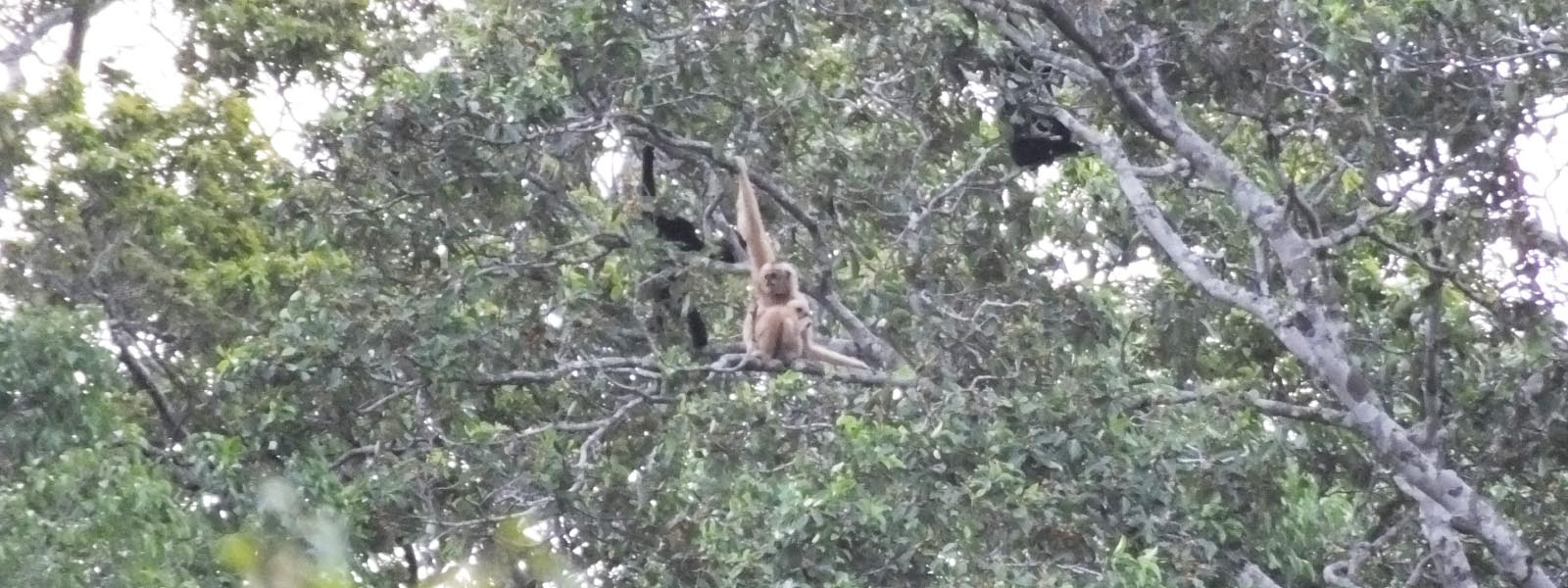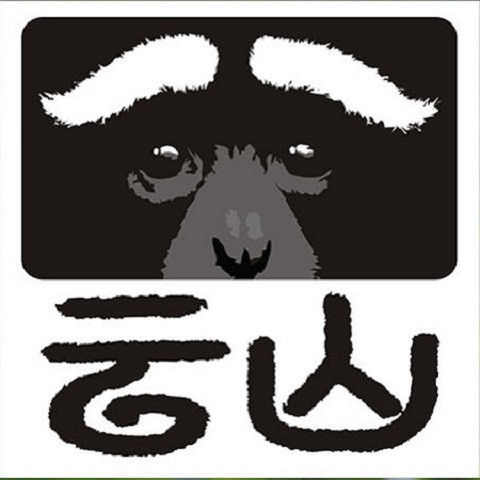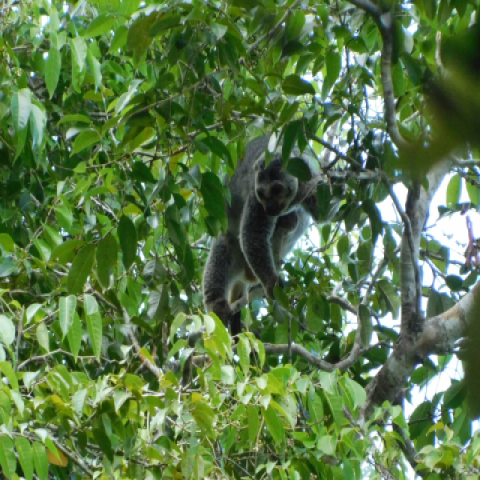Conservation Actions
This species is listed in CITES Appendix I. It is legally protected in Viet Nam (Appendix 1B of Decree 32, 2006) and in Lao PDR (‘Prohibition’ category in the list of protected species) and in China as a Class I Protected Animal under the Chinese Wildlife Conservation Law. However, despite these legal protections there has been little effective enforcement in any country to protect this species against forest encroachment and poaching.The population in China is likely functionally extinct and, as such, direct conservation action is not necessary. However, maintenance of habitat quality within protected areas in its former range should be pursued to allow for the possibility of population reintroductions in the future.
In Viet Nam, the species is now largely restricted to the protected area network, including Muong Nhe NR, Sop Cop NR, Pu Hu NR, Xuan Lien NR, Pu Hoat NR, Pu Huong NR, Pu Mat NP, Vu Quang NP and Ke Go NR. Priority sites for conservation interventions are Pu Mat NP and Xuan Lien NR and surrounds (Rawson et al. 2011). Currently, no significant conservation interventions above and beyond those provided by protected areas operations are underway. Given the potential importance of these sites not just nationally, but globally, additional financial and technical investment is required, primarily to ensure effective protection as a first measure.
In Lao PDR, the species is present in Nam Et-Phou Loey, Nam Xam, Phou Khao Khoay, Phou Panang, Nam Kading, and Phou Den Din National Protected Areas, and also in Santong Training and Model Forest and in the Nam Ngiep Subcatchment. There is an action plan for gibbon conservation in Lao PDR which includes N. leucogenys (MAF 2011). The action plan identifies Nam Et-Phou Loei NPA and Nam Kading NPA as first tier priorities with Phou Den Din, Nam Xan NPA and Phou Khao Khouay NPA as second tier priorities. Currently, WCS is implementing projects in both Nam Et-Phou Loei and Nam Kading NPAs with strong enforcement components.
Across the species' range, hunting control is a vital conservation measure: populations are already small and fragmented and, therefore, extremely vulnerable to additional off-take. Additional measures include ensuring habitat protection and improved zoning and planning to take into account key areas for gibbons within existing protected areas. Environmental education for local communities and government authorities is required. Significant technical and financial investment will be required to ensure priority areas are controlled and maintained. While this is currently occurring in Lao PDR, in Viet Nam considerable additional (international) inputs are likely to be required.
The species is commonly represented in zoo collections, both regionally and internationally, and as such there is future opportunity for reintroduction and/or population reinforcement, assuming required protocols can be met (Campbell et al. 2015).
Action Plan
The Conservation Status of Gibbons in Viet Nam
Gibbon Conservation Action Plan for Lao PDR 2011-2020
Location Information
This species occurs in northwestern Viet Nam, northern Lao PDR and southwestern China. In Viet Nam, it occurs west and south of the Black River; it has been extirpated from several areas from which it was previously recorded and is now only known from a few localities in the north-west and north-central parts of the country (Geissmann et al. 2000; Rawson et al. 2011). The southern boundary of the species in Viet Nam is not well defined, however, based on genetic and vocal evidence it appears to be to at least to the Rao Nay River, near Vu Quang National Park (Thinh et al. 2010a, 2010b).
In Lao PDR, it occurs in the northern parts, east of the Mekong River, except for a small area in northwestern Lao PDR on the east bank of the Mekong at about 20°17'-20°25'N, where it is replaced by Nomascus concolor (Geissmann et al. 2000). Its southern-most range limit in Lao PDR is not well defined, but it is believed to lie somewhere within Bolikhamxay-Khammouan Provinces. The Kading River is suggested as the biogeographical barrier between N. leucogenys and the more southerly N. siki, though the river towards the east is unlikely to represent a barrier given its reduced size (Thinh et al. 2010a, 2010b).
In China, the species was historically widely distributed between the Mekong and Red Rivers in Mengla, Jiangcheng and Luchun counties, in south Yunnan (Ma and Wang 1986, Fan et al. 2014). However, a series of surveys has documented its decline from possibly 1,000 individuals in the 1960s to probable extirpation in China (Ma and Wang 1986, Fooden 1996, Nettlebeck et al. 1999, Fan and Huo 2009). The most recent surveys suggested that the species is either extinct or functionally extinct in China (Fan et al. 2014).
Geographic Range
Extant
Lao People's Democratic Republic, Viet Nam
Possibly Extinct
China
Population Information
In China the species may now be extinct (Fan et al. 2014). A series of surveys has documented its decline from possibly 1,000 individuals in the 1960s to probable extirpation (Duckworth et al. 1995; Fooden 1996; Fan et al. 2014; Rawson et al. 2011). The most recent surveys in Mengla and Shangyong Nature Reserve, Yunnan, China, in 2008 and 2011 determined that the species is either extinct or functionally extinct in China (Fan et al. 2014; Fan and Huo 2009; Li et al. 2018).
Lao PDR holds the largest remaining populations of N. leucogenys due to relatively large areas of habitat, although gibbon hunting for the pet trade, bones for medicinal purposes and local consumption continues to seriously impact these populations (Duckworth 2008). Forest fragmentation is much higher in the range of N. leucogenys than in the ranges of other gibbon species, and the population densities are lower due to higher exploitation (Duckworth et al. 1995; Evans et al. 2000). In some parts of Lao PDR, the species has been protected through hunting taboos, but these local traditions have been disappearing, leading to an increase in their hunting (Duckworth 2008). Population estimates for the Lao PDR protected area network are largely lacking, and it is unlikely that there are any 'safe' populations given hunting pressure. Population estimates in Nam Et-Phou Loei NPA include 41 and 11 groups detected across a total of 368 km2 with a density of 0.13 and 0.20 groups/km2 in the two areas (Coudrat and Nanthavong 2014; Ruppell 2013). At least 10 groups were detected during a short survey in the southern part of Phou Den Din NPA. Key protected areas for the species in Lao PDR include; Nam Et-Phou Loei NPA, Nam Kading NPA north of the Nam Kading River, with second tier priorities being Phou Den Din NPA, Nam Xan NPA and Phou Khao Khouay NPA.
In Viet Nam, the species has been severely impacted by hunting and habitat loss, and now appears to persist only in pockets, largely within the protected area network. These populations, isolated by habitat fragmentation, are further internally fragmented by hunting pressure, leaving large gaps between small numbers of groups. Rawson et al. (2011) estimated that there may be only 300 groups remaining in Viet Nam, most of which occur close to the Lao border. It appears that the species has been recently extirpated from Hang Kia-Pa Co, Ngoc Son-Ngo Luong and Pu Luong Nature Reserves, and Khe Net Proposed Nature Reserve (Rawson et al. 2011). Protected areas where the species has been confirmed since 2000 include: Muong Nhe NR, Sop Cop NR, Pu Hu NR, Xuan Lien NR, Pu Hoat NR, Pu Huong NR, Pu Mat NP, Vu Quang NP, Ke Go NR (Rawson et al. 2011), although populations in many of these are very low and potentially not viable in the long-term. The two priority populations for conservation in Viet Nam are Pu Mat NP with an estimated 455 gibbons in 130 groups (22 confirmed) (Rawson et al. 2011) and Xuan Lien NR and adjacent Pu Hoat NR, with an estimate of at least 41 groups (Rawson et al. 2011).
Threats
Nomascus leucogenys has suffered from deforestation through agricultural encroachment into lowland and mountainous areas, in addition to fuel-wood and timber extraction from remaining forest habitats. Hunting for food and traditional medicines, as well as the live capture of young animals for the illegal pet trade, are major threats across the species' range and are regarded as a significant cause for its decline in all three countries, including its extirpation in China (Duckworth 2008; Duckworth et al. 1995; Fan et al. 2014; Fan and Huo 2009; Li et al. 2018; Rawson et al. 2011). In Viet Nam, where survey efforts have been considerable, many populations have been found to be small and local extirpations are reported as common (Rawson et al. 2011). Small remaining populations are vulnerable to ongoing hunting pressure and habitat degradation as well as impacts of small population sizes (e.g., disease, environmental events, inbreeding depression). Even low off-take from hunting in small populations of N. leucogenys can result in population collapse (Fan et al. 2014; Fan and Huo 2009).
Viet Nam has lost close to 15% of its forest cover since this species was last assessed in 2008 and could lose 60% or more of its forest cover the course of the next 30 years (two generations) if current annual rates do not decline. Lao PDR, the stronghold for this species, has lost more than 10% of its forest cover since this species was last assessed in 2008 and could also lose as mush as 60% or more of its forest over the course of the next 30 years (two generations).
Partners
IUCN Red List Account Link
Please click here to see the species' IUCN Red List Account page.Photo Credits
Roland Wirth (category image)
Project Anoulak (featured image)








